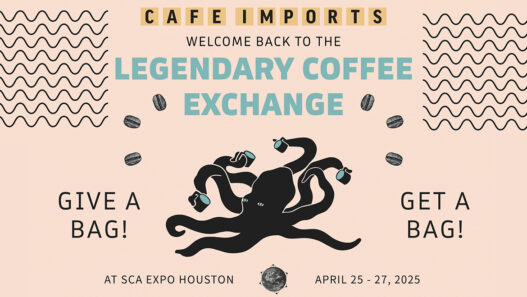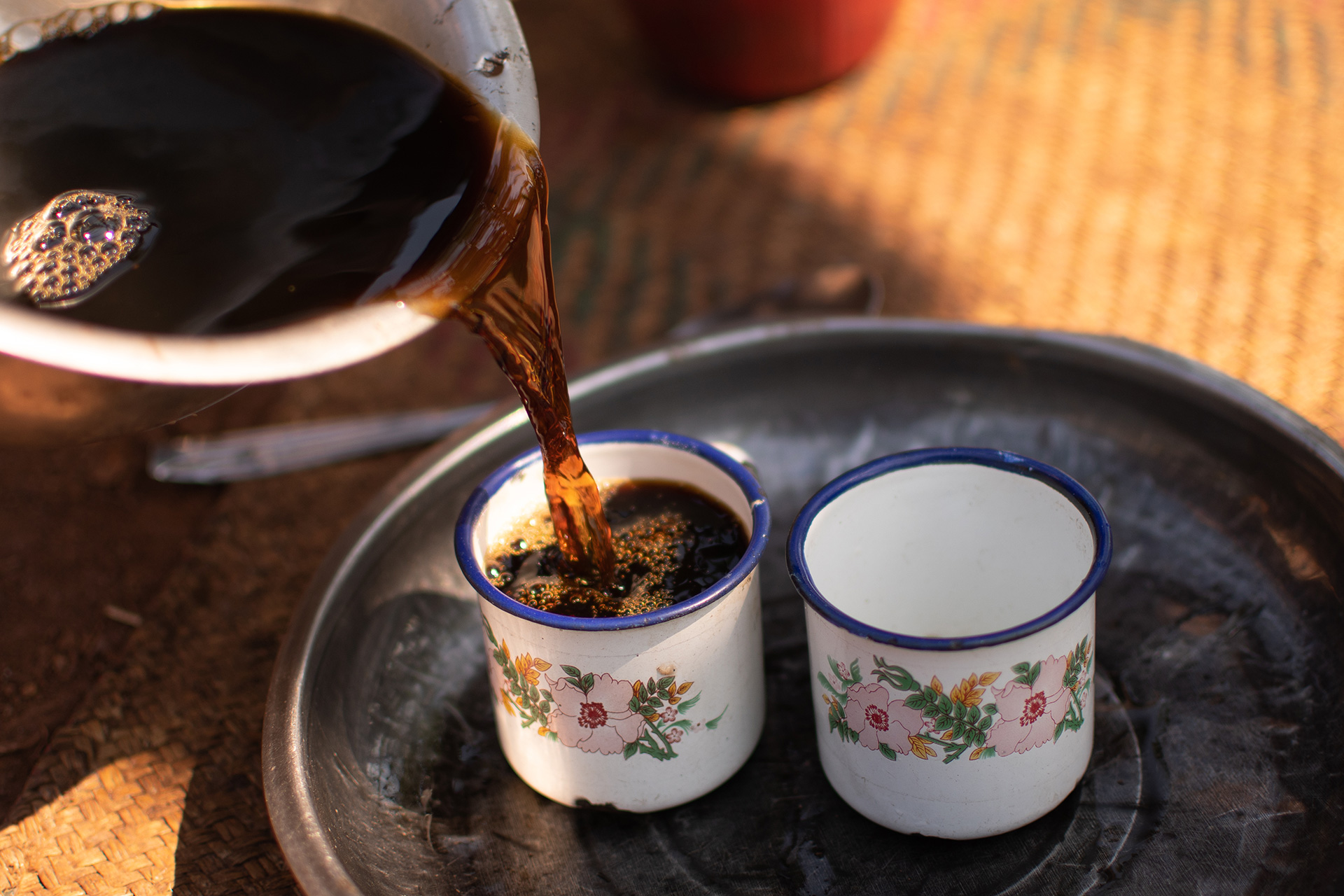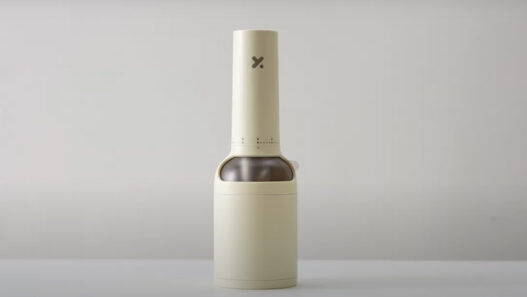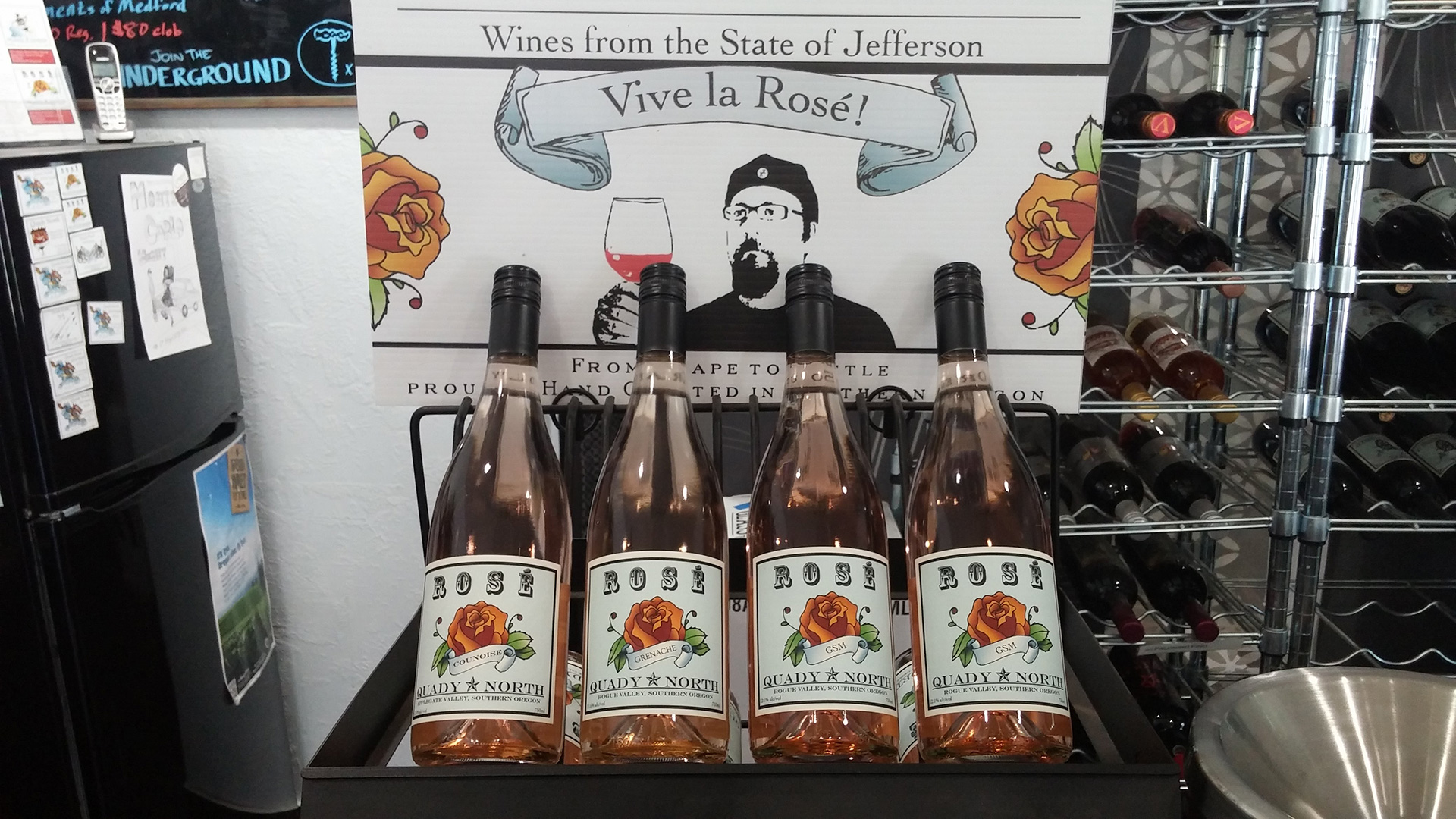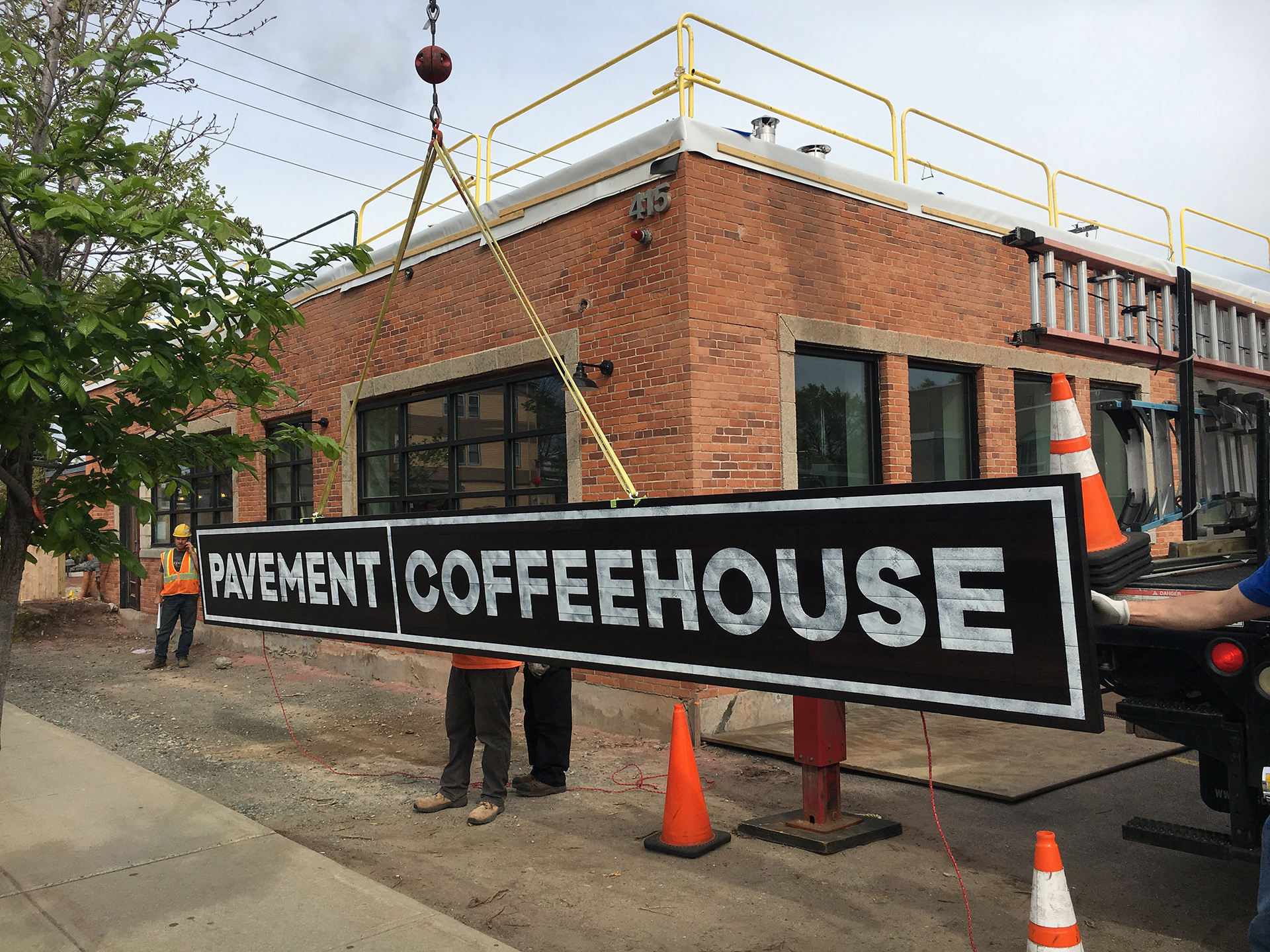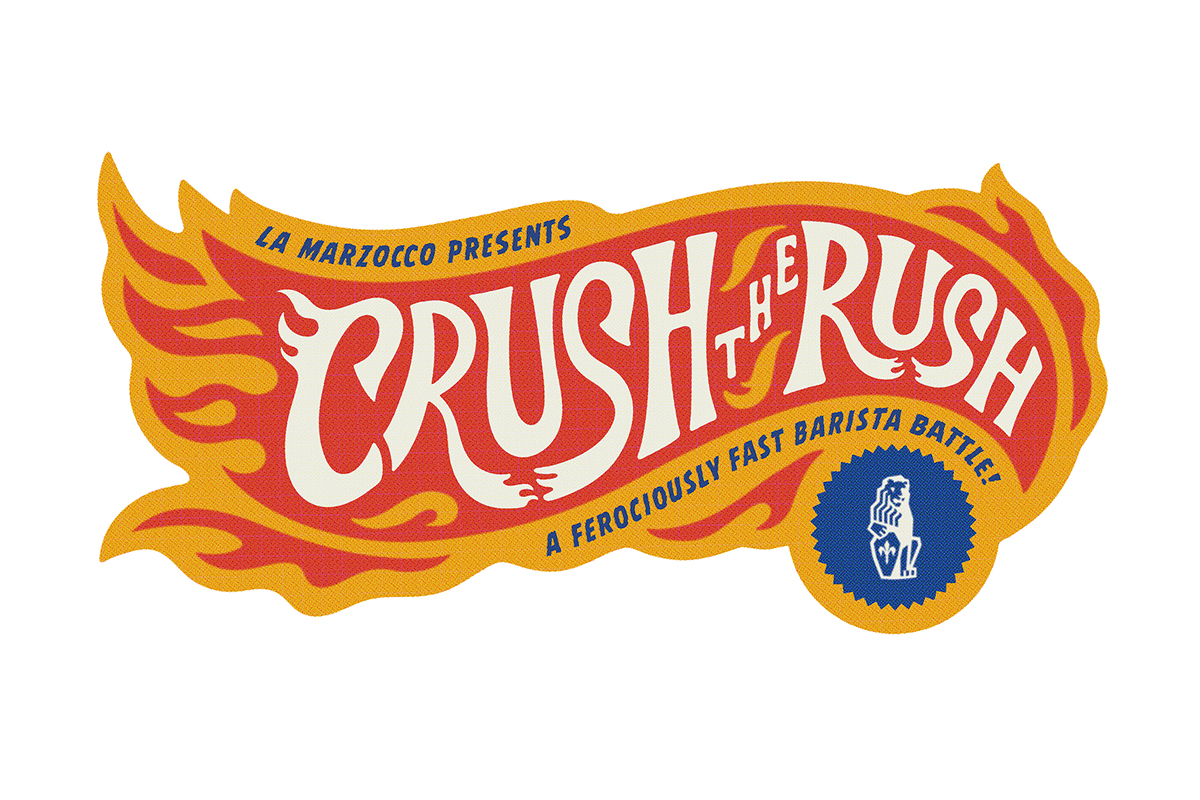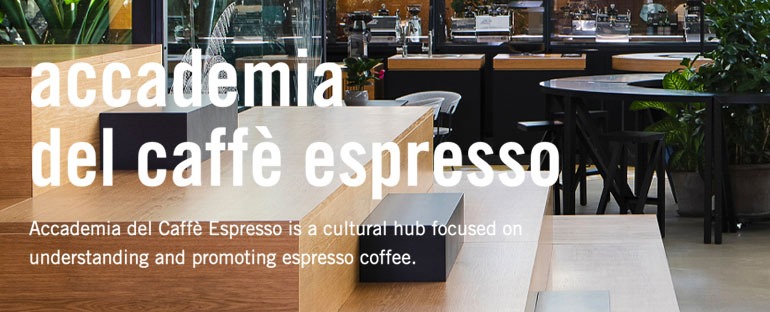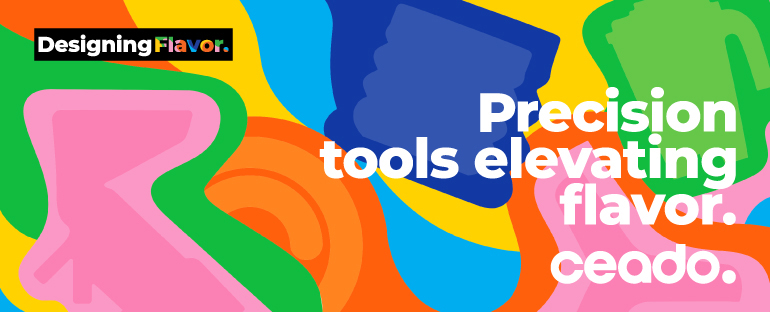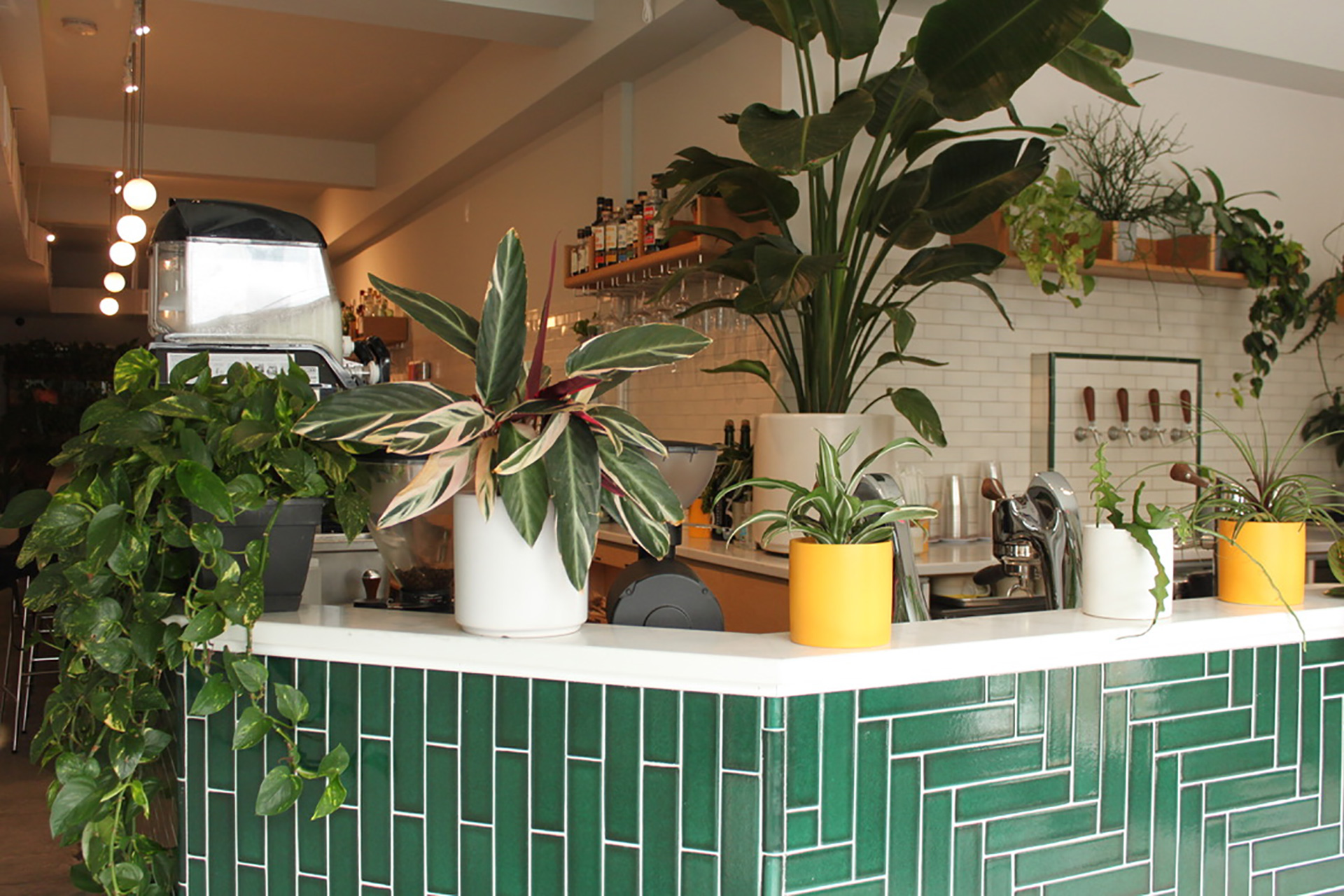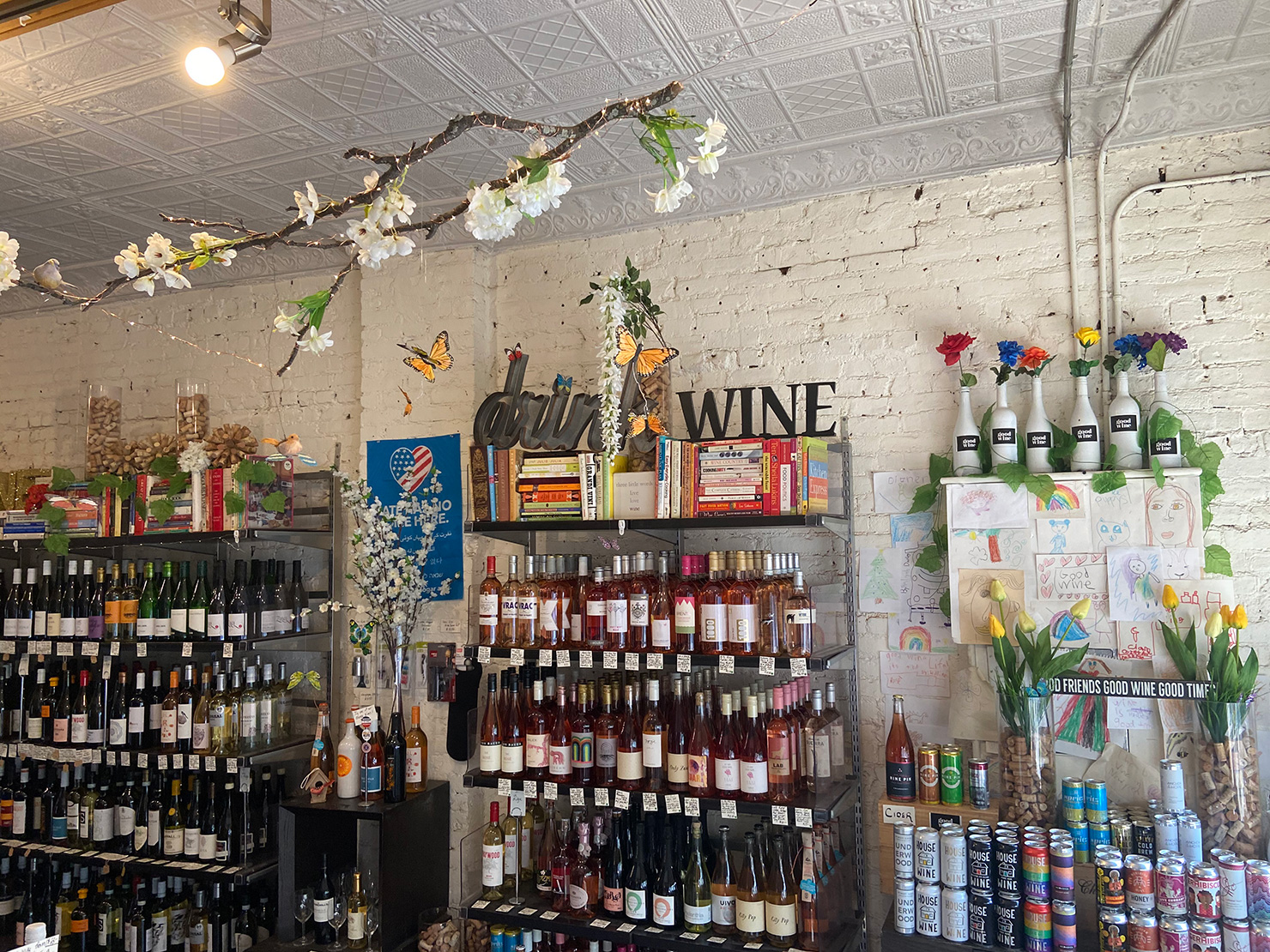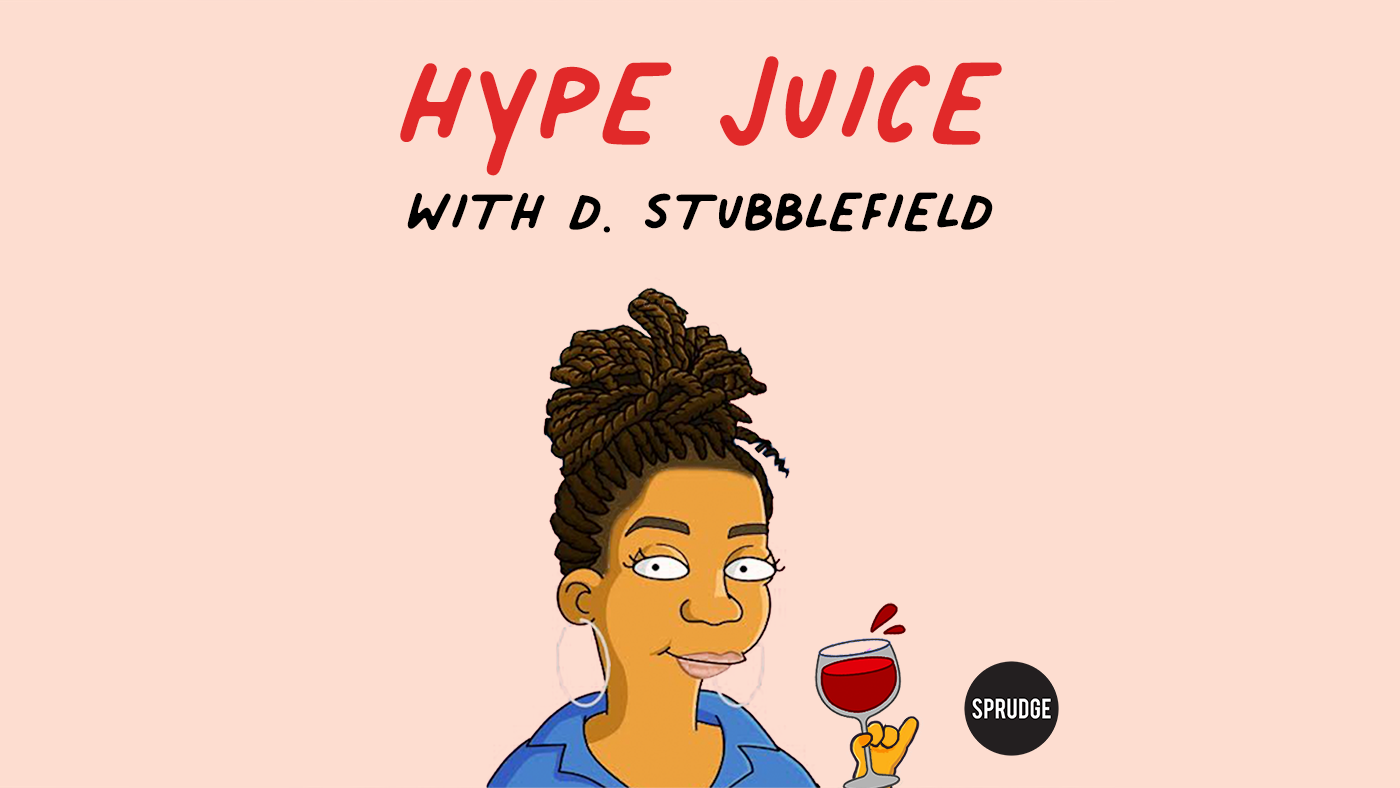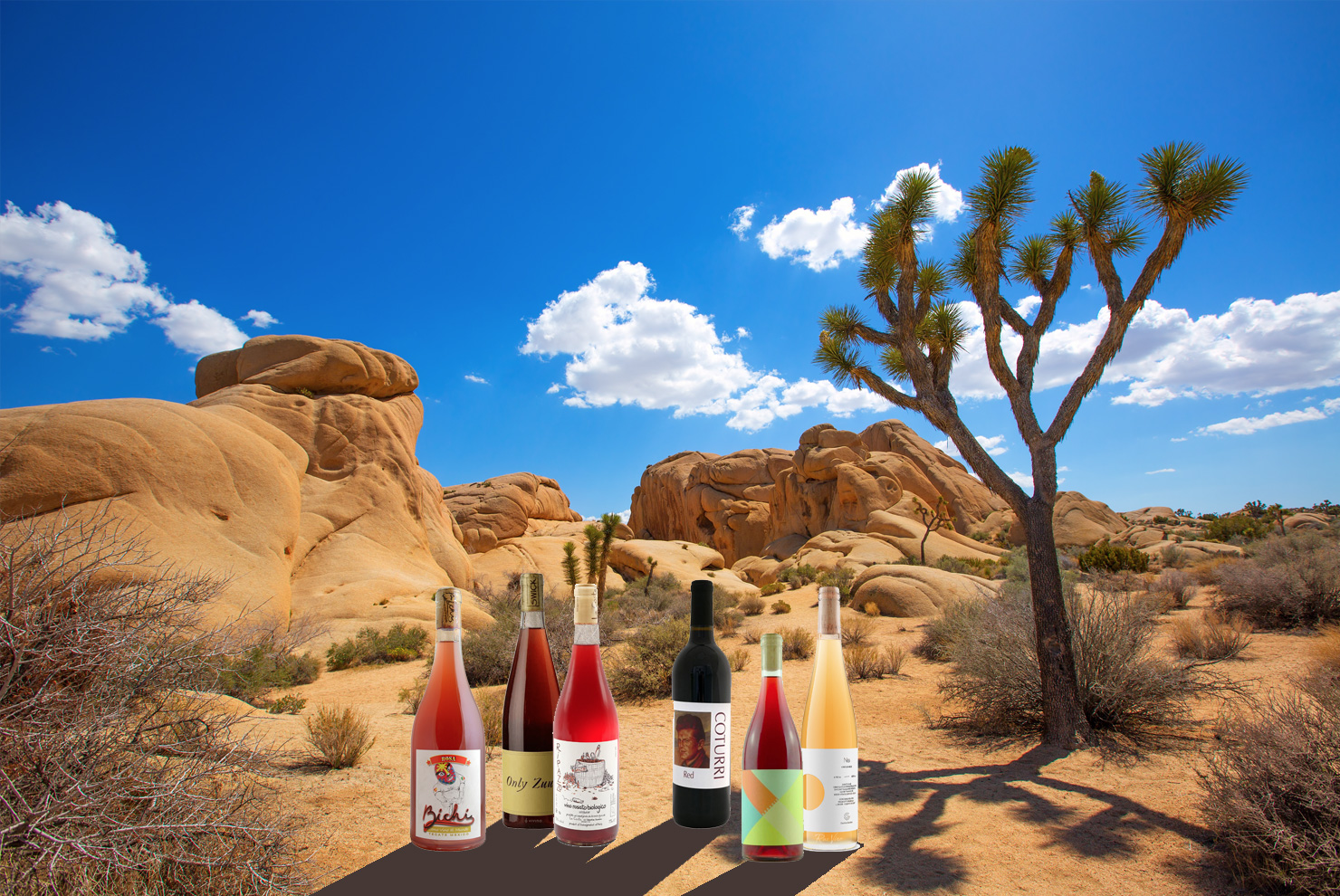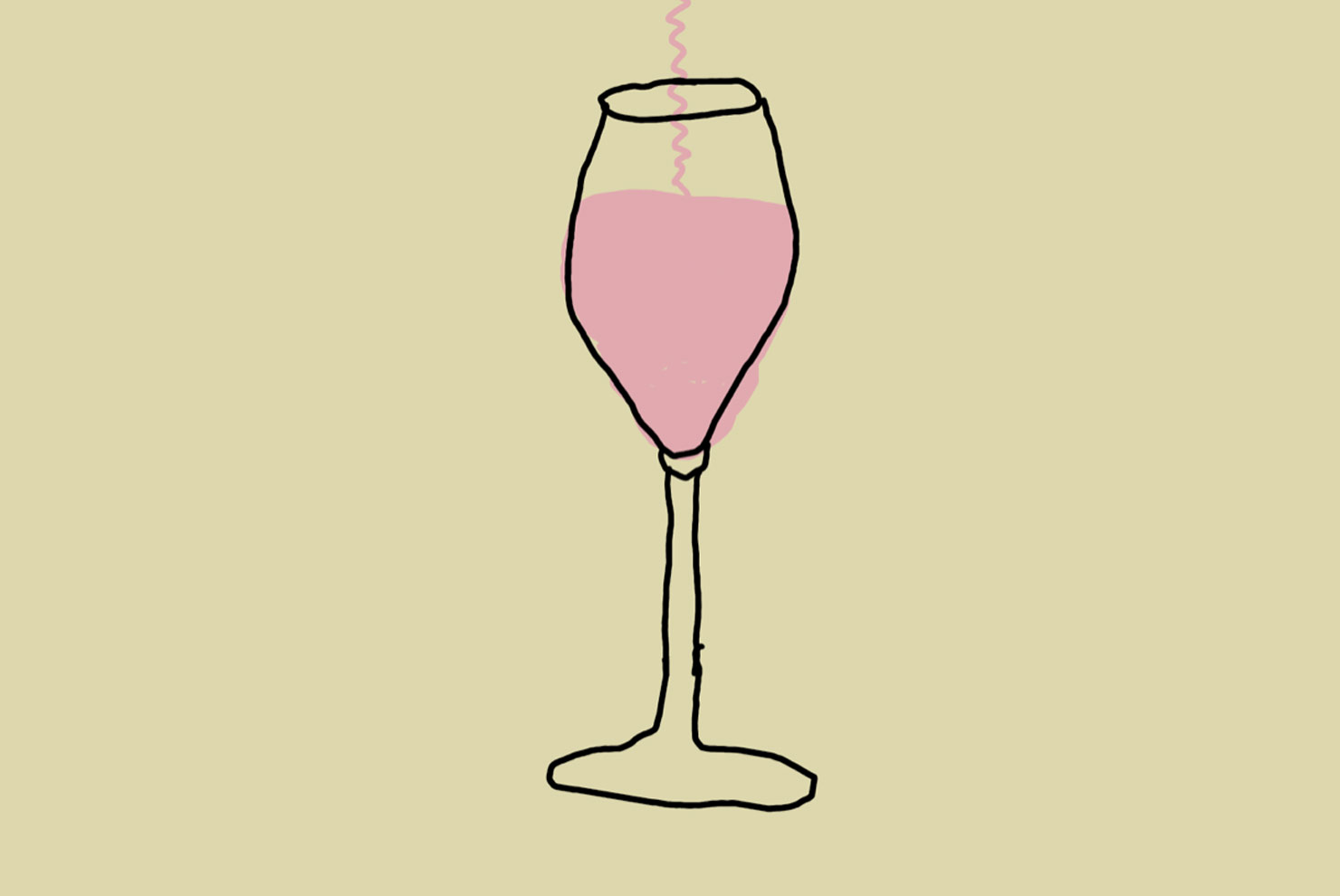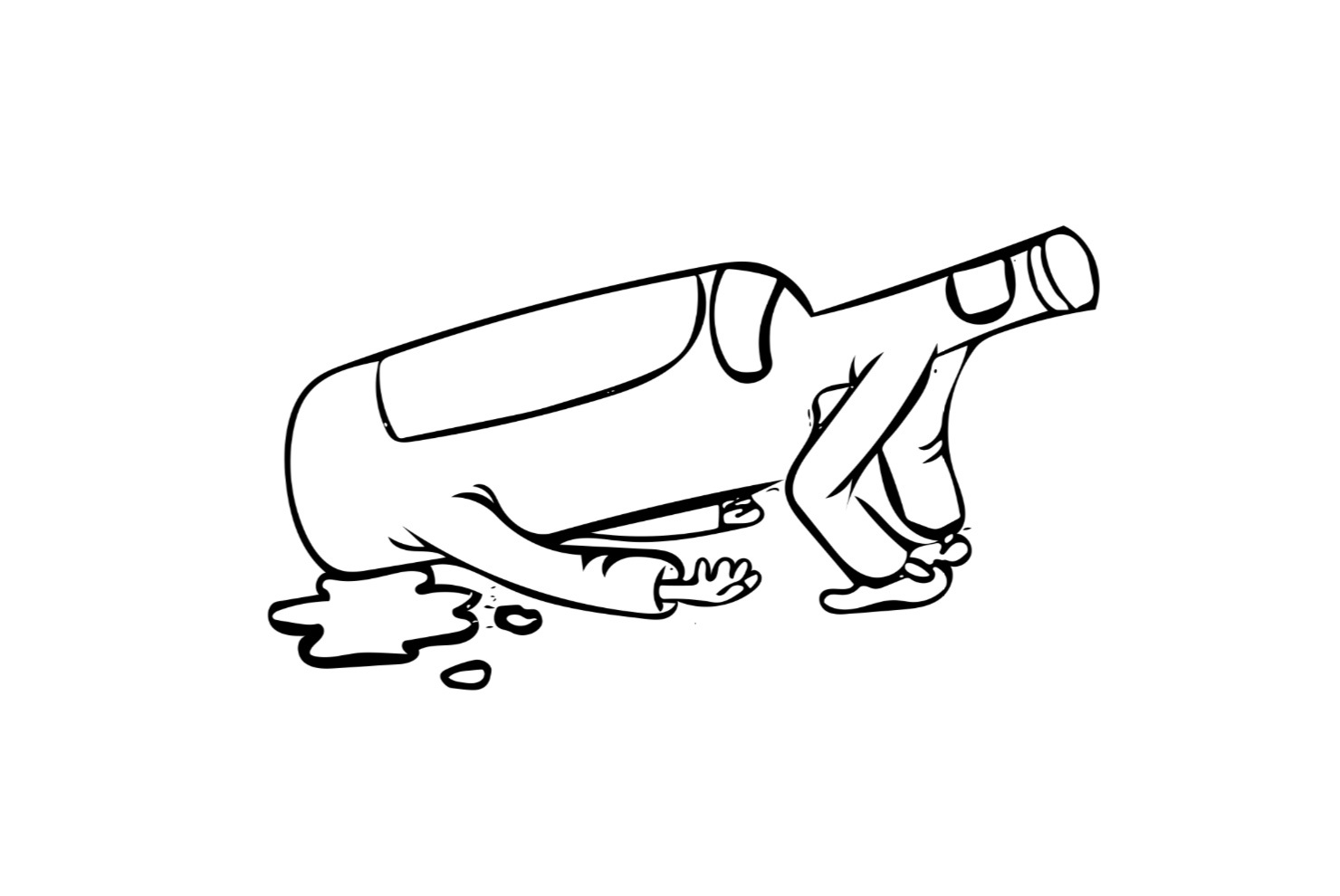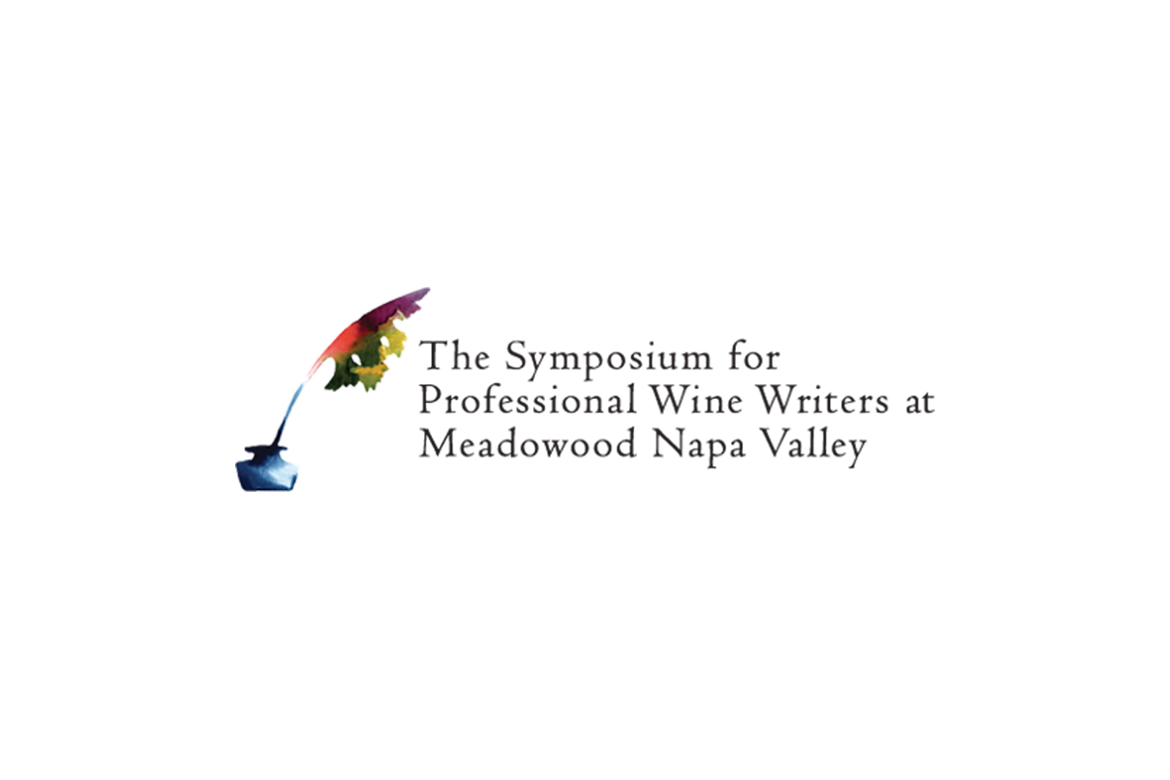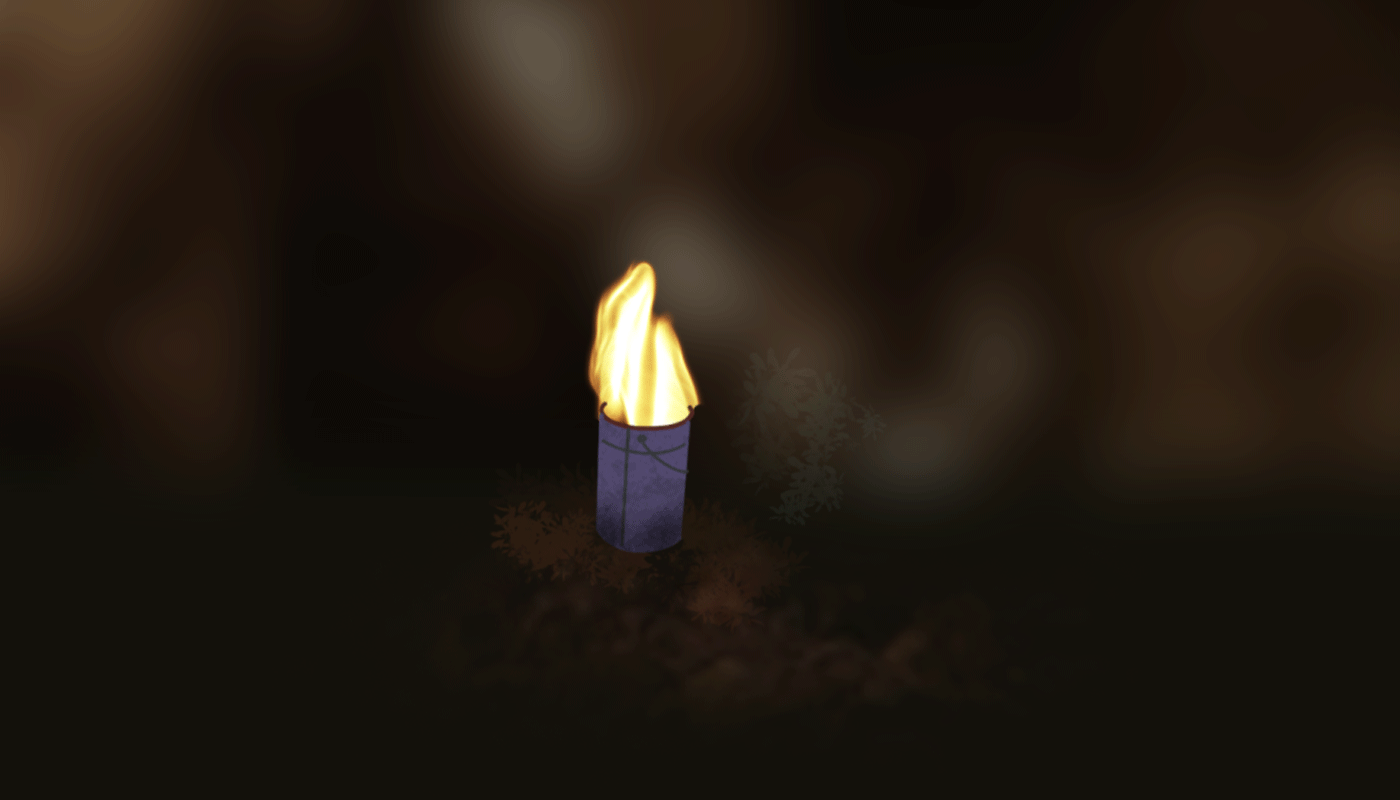Herb Quady’s birth coincided with his father’s decision to give up a career manufacturing high-powered explosives to quietly make dessert wines. Quady Winery in Madera, California was young Herb Quady’s playground and, eventually, his summer job. A few years after high school, Quady went to work at Bonny Doon Vineyard, where Randall Grahm and his band of merry winemakers showed him the joys of Rhone varietals. Hooked on the likes of Syrah and Viognier, but unable to afford grapes or land of his own, Quady took a job in 2003 with a fledgling Southern Oregon winery by the name of Cowhorn Vineyard. There, Quady discovered he could make great wines in the Applegate Valley.
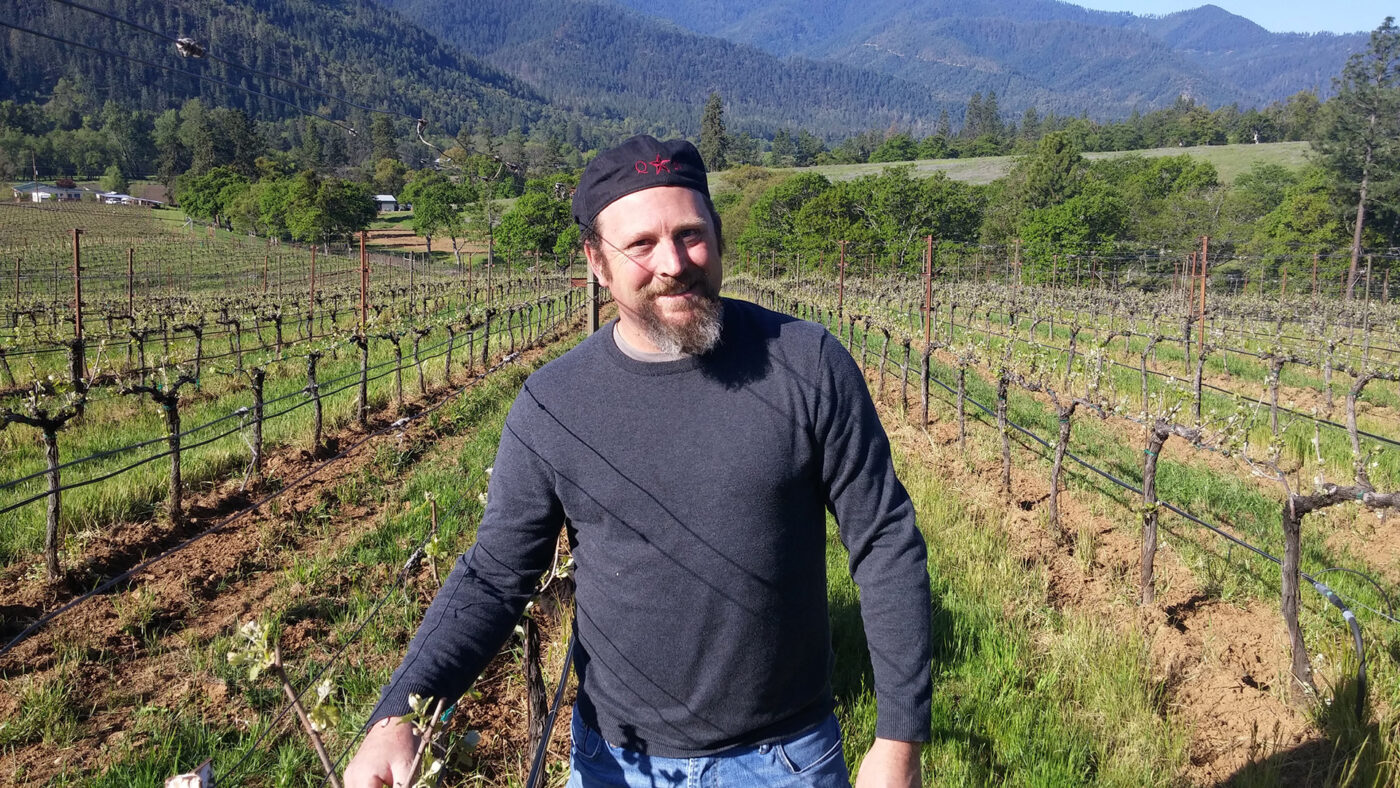
Quady moved on from Cowhorn a year later to work for nearby Troon Vineyard. During his 10 years making wine at Troon, Quady and his wife Meloney saved up enough money to buy land, plant a vineyard, and launch their wine label; Quady North.
Today, Quady farms his estate vineyard (the original 2005 section is called Mae’s Vineyard, and the block planted in 2011 is called Eevee’s Vineyard, both named in honor of Quady’s daughters) while managing several nearby properties for his Applegate Vineyard Management company. In addition to the 7,500 cases made annually at Quady North, Quady, with the help of partners and associate winemakers Brian Gruber and Nichole Schulte, makes 25,000 cases of wine for other wineries at their Barrel 42 Custom Wine Craft facility.
I sat down to talk with Quady about his journey to Southern Oregon, natural wine, and his role acting as the “godfather of grapes” to a small group of young Portland-area winemakers using his fruit to stir up the Willamette Valley.
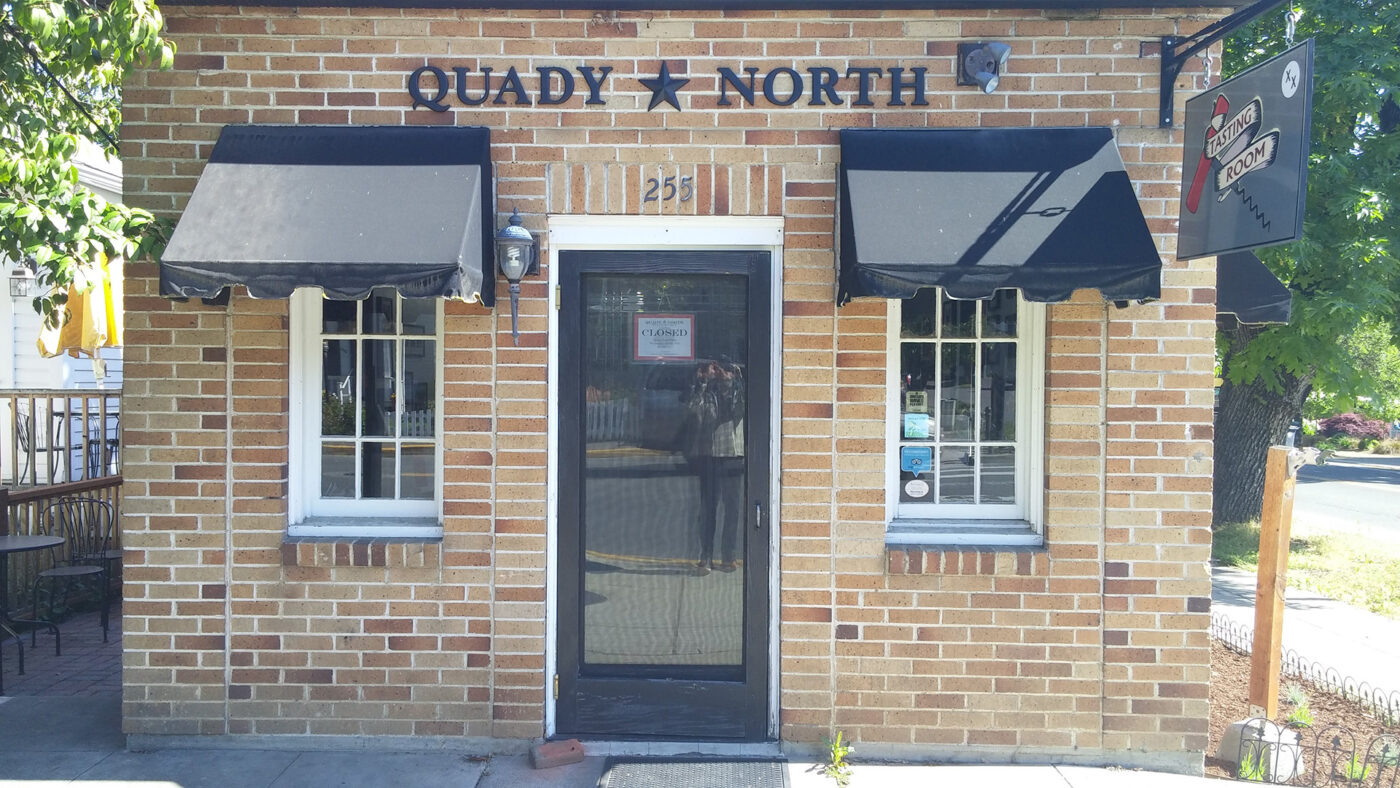
Sprudge Wine: What was it like growing up in the wine business?
Herb Quady: I was born in 1975, the same year my parents started Quady Winery, so I really didn’t know anything else. It was the family business and it was so all-encompassing that I never really thought much about what it was like growing up on a winery. I’d get off the bus from school and my afternoons and evenings would be spent hanging out with my dad, doing things like hand-corking and hand-dipping bottles. As I got older, I’d work at the winery during the summer, starting with the simplest jobs and working my way up. Other than bookkeeping I think I held every job possible. It was a great way to learn about the wine business in a non-romantic way. I learned at a very young age that working at a winery is extremely hard work. I also learned how good vintage years and bad vintage years would impact how my family was doing.
What kind of wines did your family drink?
Oh man, we drank great wines every night. My father didn’t just make wine, he was a collector, and we would have fun doing blind tastings to see if we could figure out what was French and what was from California. He also loves learning about new wines, so we’d frequently have something esoteric, like German Pinot Noir or Blaufränkisch, open on the kitchen counter. So growing up was all about trying these different wines and talking about what made them tick. One of the first wine books my dad gave me to read when I was just out of high school was Wines of France by Alexis Lichine. I’d tell anyone interested in wine to read that book because Lichine delves into all those wines, describing their history and why they taste the way they do. My dad also gave me books written by Jancis Robinson, Kermit Lynch, and Hugh Johnson and we’d talk about them at dinner.
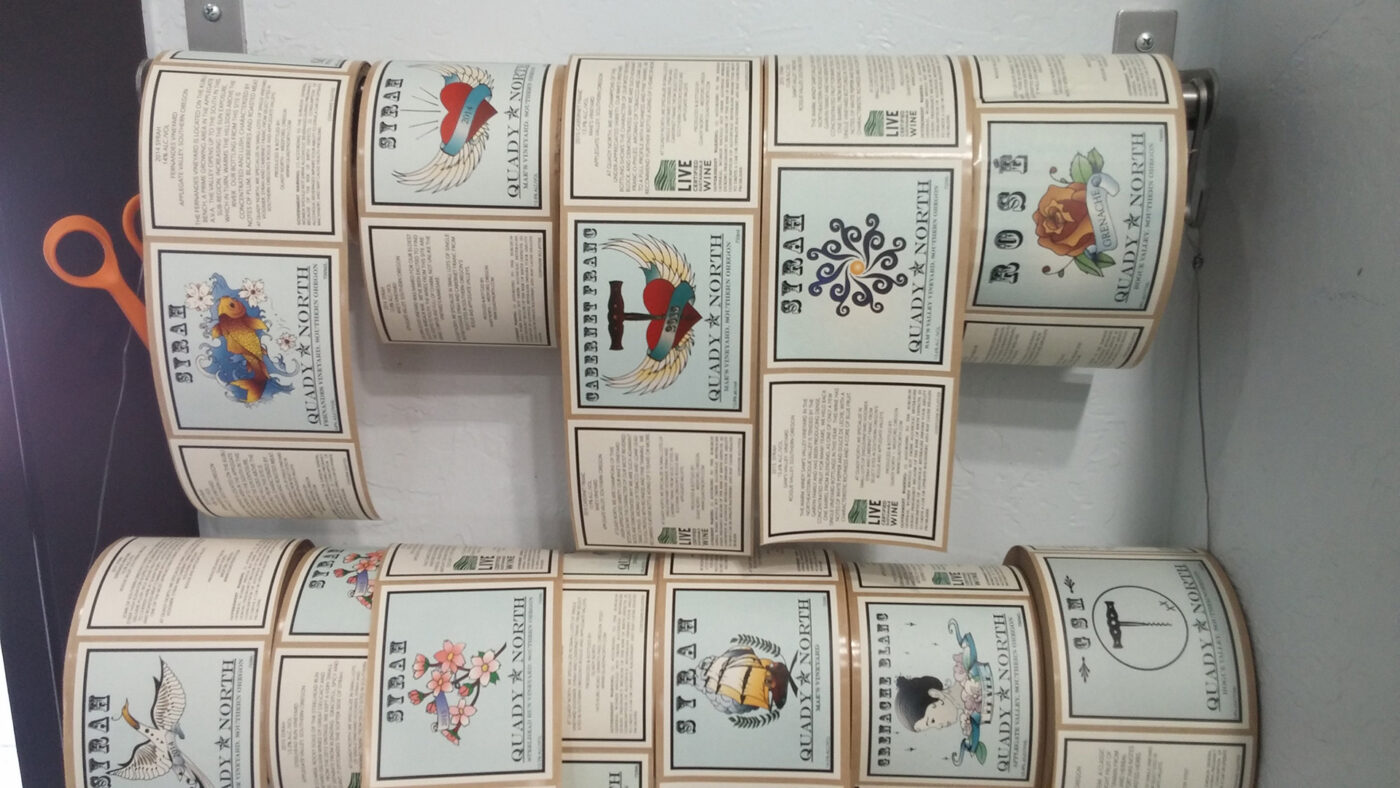
Did you always know you wanted to become a winemaker?
Not right away. I thought I would go into law or politics, but I quickly became disillusioned with those fields. Then those romantic notions about working at a winery began popping into my head. I asked my dad if I could come back to the winery, perhaps to work my way into taking over the family business. My dad said, “Oh yeah? If you want to work at a winery, go to work for somebody else.”
My dad knew the General Manager at Bonny Doon, a woman by the name of Patrice Boyle, so he asked her if they had any work available. She asked, “Sales or production?” I said, “Production.” That led to an interview at the Bonny Doon production facility in Santa Cruz with Eric Sussman, who now owns Radio-Coteau. He asked me if I had worked in a winery before and I told him I had scrubbed tanks, cleaned hoses, transferred wine, and things like that. Sussman said, “Great, will you work for $8.50 an hour?” My wife and I had rent coming due, and I was making $6.75 an hour as a busboy at a local restaurant. So I said, “You bet!” Melonie couldn’t believe someone would pay me $8.50 an hour to work at a winery and Sussman called up his boss and said, “Can you believe we got a guy with experience to work for only $8.50 an hour?” I guess we were all happy about the new job.
What was it like working at Bonny Doon?
I loved it! I was there in the late 1990s and not only did they work with unusual grape varieties, they were always conducting experiments like co-fermenting raspberries with Sangiovese grapes. We were also making a thousand cases of the Vin Gris de Cigare a year, which was crazy for rosé back then.
My family’s winery was already set, however, working like clockwork to do a certain thing, dessert wine, and do it very well. I was so excited by what I was doing at Bonny Doon; I knew that while I wanted to become a winemaker, I was going to have to do it somewhere other than my family’s winery.
What’s the most important lesson you learned working at Bonny Doon?
When I became an assistant winemaker there, I was in charge of certain projects. I’d get Riesling grapes, for example, in early from the Central Coast or the Lodi area and they would be beautiful. There’d be nary a mark on the fruit, and the chemistry looked down the pipe. Later on, in harvest, we’d get fruit in from the cooler spots, say Mendocino or maybe even Eastern Washington and Oregon, and the fruit looked worse and worse. Maybe there is a little mildew, or they look a little stringy, whatever. And their chemistry was always more challenging. But when fermentations were over, and we started tasting, the grapes that struggled to make it were always more interesting. It was a great school for a young winemaker to have all this fruit coming in from up and down the West Coast, know its chemistry and where it came from. I learned the grapes from the cooler edges of their growing spectra seemed to make the more interesting wines. I was into Rhone varieties by then so I thought, “Where are the coolest edges on the West Coast for grapes like Syrah and Grenache?” I considered the Central Coast area, pushing further west to get more ocean exposure, or perhaps Western Sonoma. But when you are young and starting out, you can’t buy that fruit or any land, so I started looking around for places to work. But at the time, there weren’t any jobs in those areas, either.
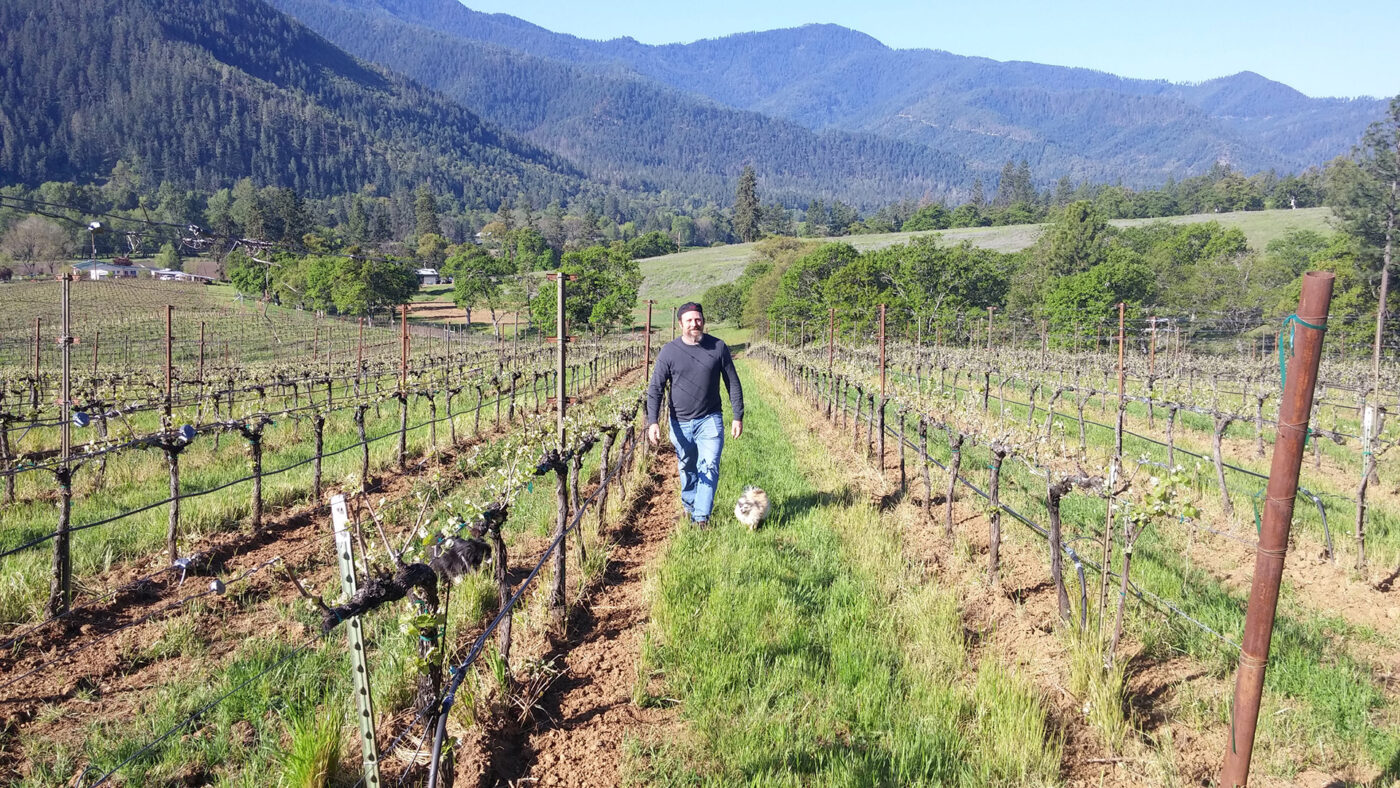
Is that what brought you to Southern Oregon?
Yeah, luckily, in late 2003, I got a job offer from Cowhorn Vineyard, a winery that was starting up in Southern Oregon. I didn’t know a lot about the area, but I did my due diligence, looked at the soil and climate data and layered that over what I knew about the Rhone Valley and what we saw in California. It looked kind of like western Paso Robles, Mendocino, or the upper Rhone, even though it wasn’t exactly like any of those places. Because of what I learned at Bonny Doon, I decided it might just be possible to make good wines with Rhone varieties in Southern Oregon. Cowhorn’s owners, Barbara and Bill Steele, had come to the same conclusion and their biodynamic farming consultant, the late Alan York, was pretty optimistic as well. Also, Syrah was already grown in the region, so this was all an eye-opener for me.
When did you strike out on your own to make wine?
We bought 100 acres in the Applegate Valley in 2005. Those first few years I tried to farm it organically, but I ran into a major problem with an invasive plant called starthistle. It just wasn’t a sustainable situation, so I switched to Low Input Viticulture and Enology (LIVE) certification so I could use Roundup to handle the starthistle. Having the vines grow up and planting crop covers helped to shade out the starthistle, so our need to spray decreased each year. This year, in 2018, I’m moving back to organic farming, and we hope to have certification within a couple of years.

Does that carry over to the winemaking practices at Quady North?
This facility where we’re sitting is certified organic and LIVE certified as are our wines, except for a few where we purchase fruit from vineyards where we don’t manage the farming. We are anxious to get organic certification for our estate vineyard, as well as for a few of our partner vineyards so that we can label those bottles “Made with Organic Grapes.”
Tell me about your relationship with all the young Portland-area winemakers that are buying your grapes?
You mean the kids up north? It all started with Cabernet Franc. I had made a Cabernet Franc and was selling it up in Portland when Leah Jorgensen [Leah Jorgensen Cellars] first hit me up. I think Tom Monroe from Division Wine contacted me shortly after that. They were interested in wines from the Loire Valley, and they had tried my 2006 Cabernet Franc, so they emailed me about buying grapes. Tom was particularly excited to get Cab Franc, and Leah had a cool idea about making a Blanc de Cabernet Franc.
Ironically, when we started the vineyard, we thought it would be a good idea to sell some fruit to a few well-known producers to establish the reputation of the vineyard and the legitimacy of the project. So I picked out a few wineries who made Syrahs I enjoyed and called them up. I contacted guys like Eric Hamacher, Joe Dobbes, and Sam Tannahill and they all said, “No thanks, we’re good.” So I just made the wines myself and sold them to whoever was interested. Eventually, here come these kids nobody had heard of and they wanted to buy my fruit. So we picked it, delivered it, and they all made really interesting, exciting wines. Plus they were so exuberant. For Leah Jorgensen, this wasn’t some “also-ran,” like folks who make a lot of Pinot Noir and say, “Oh, I just have a little Syrah on the side.” This was her signature wine, and she wasn’t interested in Pinot Noir. She even vineyard designated her wine, which really helped us. That led to people like Brianne Day [Day Wines] and Corey Schuster [Jackalope Cellars] calling me up to buy even more fruit. Now I get several emails a month asking to buy Cabernet Franc and Syrah, but I don’t have any left over to sell.
Wow. Just how much fruit are you selling to the “kids up north” these days?
Between my estate site and the 10 vineyards I manage, I’m guessing it’s around 100 tons a year.
Many of those vintners are using your fruit to make natural wines. How does Quady North fit into the natural wine picture?
When I first began making wine at Quady North, I was relatively conservative because I was trying to learn about the vineyards themselves. I was sensitive to other winemaking effects that might make the vineyards less transparent. If you can control all the other variables, then the one variable that changes should be the one that makes the wine different. That was phase one, which covered 2006 to 2014.
Phase two, over the last several years, has meant adapting the wine style to be more natural and to explore other aspects that may come through the terroir or otherwise. We don’t always make a big deal about this, but the Mae’s Vineyard Syrah, the Flagship Syrah, the La Battala [Cab Franc-Malbec] are all native ferments made with grapes from a sustainably farmed vineyard that is transitioning to organic. There’s no filtration, they are racked once, and they are bottled with a minimal amount of sulfites.
What is the definition of natural winemaking? For some people what I’m doing may be a few degrees off, but it is the direction we are headed. This year we made a pét-nat Vermentino and Orange Muscat where those were literally the only two ingredients. No yeasts, sulfites, bentonite, fining agents, or anything like that. So call me someone who has always been a sympathizer, a fellow traveler who is moving along the natural path on a wine-by-wine basis.

It doesn’t sound like you are ready to go full on natural quite yet.
Call me a rational actor, but I’m part of a small group of people whose livelihood has always depended on the wine business, so that’s going to put us, in many ways, on the conservative side. We can’t afford to put something out that’s not saleable to enough people. The other thing is, we’re here in Southern Oregon, and Portland is my largest market. But I can’t hand-sell my wines to every restaurant in Portland like a lot of my friends up there do. They can pick and choose where certain wines go, and they can develop a rapport with the wine buyers. It’s a nice, tight community there. So I need to make some wines that will appeal to a broad audience.
But we will always do things in-house like take two tons of fruit and let them go native. If we like the result, we can do it again the next year, and if we like it, again and again, we can say, “Hey, we’re doing this wine native from here on out.” I do this with Syrah vineyards every year, but some of them don’t have a great native yeast ferment, and cultured yeast makes a better wine with that fruit. The native ferment for those vineyards, for whatever reason, is muted and we don’t get a lot of aromatics out of that. But Mae’s Vineyard, our estate vineyard, has a great native ferment. That could be because we started it organically, it could be because we return compost and the native yeast is some hybrid with all those pressings being returned to the soil, but for whatever reason, Mae’s has a great native yeast ferment.
How many vineyards are you getting fruit from?
Besides Mae’s Vineyard, which was planted in 2005, and Eevee’s Vineyard, which was planted in 2011, we manage 10 other sites. We get fruit for Quady North wines from six of those sites. But we are trying to draw down on the number of vineyards we manage and the number of vineyards where we buy the fruit without managing the farming. Steelhead Run Vineyard, for example, is a big one for us and it’s one of my favorites. It has rocky soils, and we are talking with the owners about possibly shifting it from LIVE certified to organic.
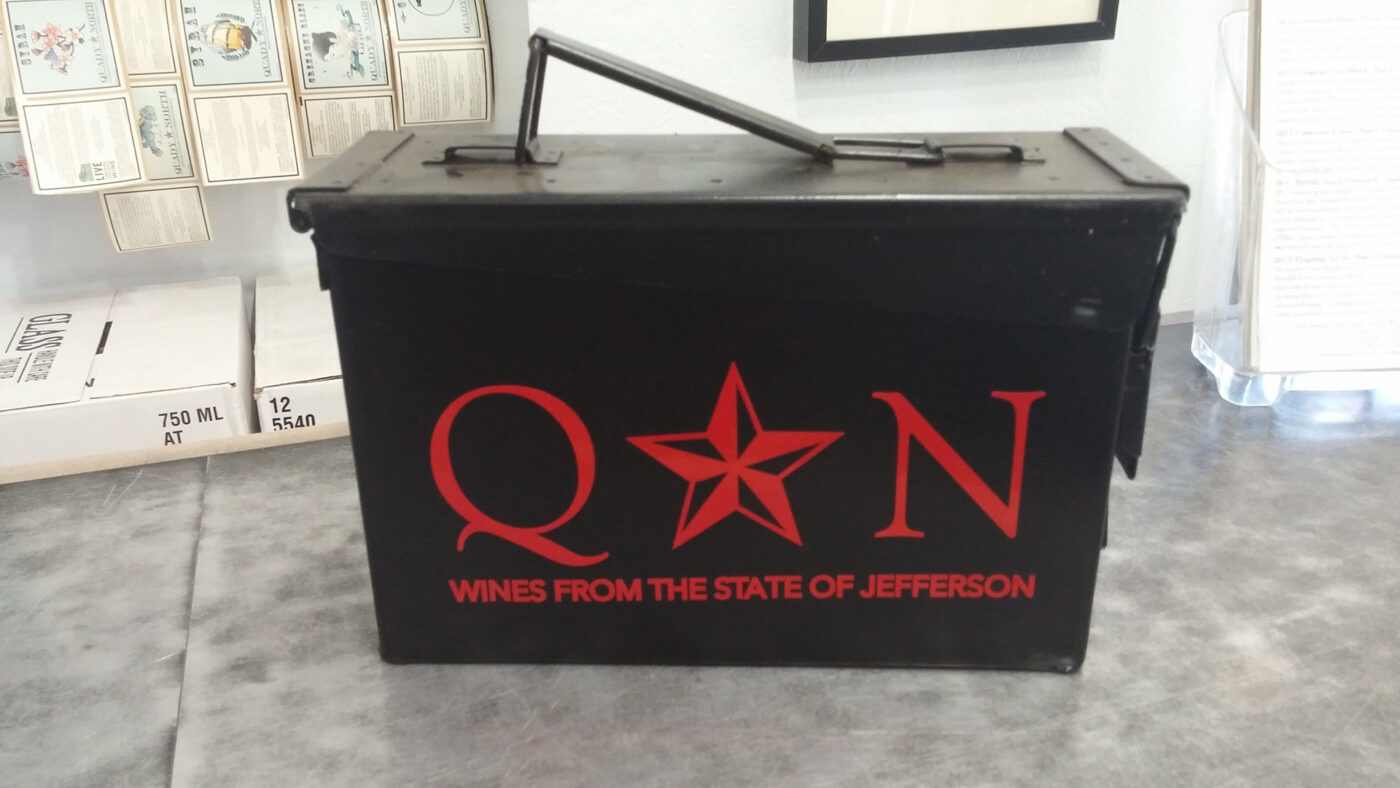
You describe Quady North as being “Pan-Rhonish.” What does that mean?
I first started with this whole idea of making Syrah, Viognier, and Cabernet Franc. Then I decided to add Grenache, Mourvedre, Grenache Blanc, Marsanne, Roussanne, Tannat, Malbec, Orange Muscat, and Malvasia Bianca. This year we even added Vermentino and Counoise. It wasn’t just about the Rhone anymore, so I started describing the winery as “Pan-Rhonish.”
You also put “Wines from the State of Jefferson” on your labels. How did that start?
What do you do if you are an Oregon producer but you don’t make Pinot Noir? Can you even legally put “Oregon” on your labels if you don’t make Pinot Noir? I’m not sure, it may be illegal, but I don’t keep up with all the rules.
I’m being facetious, but it frustrated me. I have to be careful here as we have some fine pinots in this region, but I felt like Southern Oregon’s “signature variety” was probably something else, like Syrah or Viognier. I’m not “Oregon,” and I’m not geographically California, so I decided to use the “State of Jefferson” moniker, which is very popular here as a catch-all for things that attract people from both sides of the border. Our public radio station based in Yreka and Roseburg uses the phrase, as does our equestrian club that has members from both sides of the border. But I’m sensitive to the fact that in the past few years the phrase has become associated with a political group whose views I don’t agree with.
But isn’t politics how the phrase originated in the first place?
Yeah, back in the 1930s people in Southern Oregon and Northern California were thinking, “The big cities aren’t paying attention to us, so we’ll go our own way and do our own thing.” It was a rural, democratic, Jeffersonian movement back then, but now it’s becoming associated with a brand of politics I don’t agree with. So we are kicking around the idea of taking it off our labels and coming up with something else.
But unlike the 1930s, it appears that Southern Oregon, at least regarding wine, is now getting lots of attention from the big cities.
It’s been amazing. I used to travel to Portland to pour our wines, and people would say, “Southern Oregon? Are you from Eugene?” Now people not only know where we are, but they also visit us, they have favorite wineries, and they know where to get the wine. That has been a big change over the past few years. I was in Los Angeles last week, and the wine buyers and sommeliers not only knew about Southern Oregon wines, they even knew all our principal appellations. That’s a sea change from 20 years ago. We’re also getting nice write-ups from critics like Josh Reynolds, which never used to happen. I’ll say this about the northern part of the state: as Brand Oregon continues to improve, Southern Oregon benefits as well. If you go into a nice wine shop and Brand Oregon begins on the shelf at $50.00 a bottle, and I’m selling a $29.00 Syrah from Southern Oregon, people aren’t blinking at that price now.
Do you think Southern Oregon needs its own signature grape?
I don’t think we need a signature grape, and I don’t think it’s entirely reasonable to ask it of the region. The thing is though, if one is declared, that signature grape will probably be determined by the most successful wineries, the ones who got their wines out there for people and the critics to try. Look at 1967 in California. When Robert Mondavi began making Cabernet Sauvignon, there was probably twice as much Riesling planted in the Napa Valley. But nobody was going around slapping the words “Napa Valley” on their Riesling bottles and getting to the best stores and restaurants in New York City and San Francisco. Robert Mondavi did that for Cabernet Sauvignon, and it has been their signature grape ever since.
Here in Southern Oregon, we’ve been doing that, along with Abacela, Cowhorn, and a few others. Whoever does it the best and longest might succeed in naming our signature grape. At the same time though, asking Southern Oregon what its signature grape is would be like asking that same question of Sonoma County. They have Chardonnay, Zinfandel, Pinot Noir, Syrah spread all over the place and it’s all pretty good. So what’s their signature grape? Southern Oregon is an even larger geographic area than Sonoma, so I don’t think it’s fair to ask us for one signature grape just because the Willamette Valley has Pinot Noir.
The Willamette Valley has a different story. The Willamette Valley was at the edge of where you could grow grapes, so they didn’t have a lot of options besides Pinot Noir to work with. The extraordinary rise of Pinot’s popularity eventually made it a “no-brainer” when it came to crowning a signature grape. We also didn’t have a world-famous Rioja producer show up here early on to give a stamp of approval to a grape like Tempranillo. The Willamette Valley had the Drouhins, and their arrival helped seal the legitimacy of the work of David Lett and others.
Speaking of the north, I read an interesting comment you once made about Willamette Valley Pinot Noir.
Oh no, what did I say?
You told a New York Times reporter that before you moved to Southern Oregon, you thought Oregon wines were all “lightweight Willamette pinots.” You followed that up by saying, “Then I did my research on the microclimates and the soil and the season length and I was, like, wow, I could make some good wine here.”
Did I really say that? Oh great, Herb Quady; asshole. That was a very California-centric attitude to have before I moved up here in 2003, but I hope that my view of Willamette Valley Pinot Noir has evolved. Let’s just say Pinot Noir is not the wine I will typically be reaching for at dinnertime. I have a nice collection of them, and I enjoy them, but I’m always going to root for the underdog. That’s one of the things I loved about working at Bonny Doon; they were always looking out for the under-served varieties. Pinot Noir is not an underdog. There’s more we can do well here in Oregon in addition to pinot, and we need to embrace that.

Thank you so much for taking the time to chat. Besides leaning in a more natural direction, what does the future hold for Quady North?
I just tasted through a lineup of our 2014 wines that were made and bottled here at our new facility. To be honest, I think they are a big step up for us. We were able to focus in a more thoughtful way, and everything was just really tight. They had been locked down, perhaps because of our reductive winemaking, but now they are really opening up. The Flagship Syrah, Cabernet Franc, Mae’s Vineyard Syrah, and Steelhead Run Vineyard Syrah, in particular, are really nice and will be released over the next several months.
We also have this new interest in sparkling wines that’s kind of taking over around here. The Sparkling Rosé of Cabernet Franc and the pét-nats we talked about earlier, we are going to make more wines like that and increase their production. We do the capping and bottling, and the only thing we outsource is the disgorging. We do plan to buy more equipment, however, so within a year our sparkling wine program should be entirely in-house. And who doesn’t want more sparkling wine in their life?
Quady North is located at 255 E California St, Jacksonville. Visit their official website and follow them on Facebook, Twitter, and Instagram.




